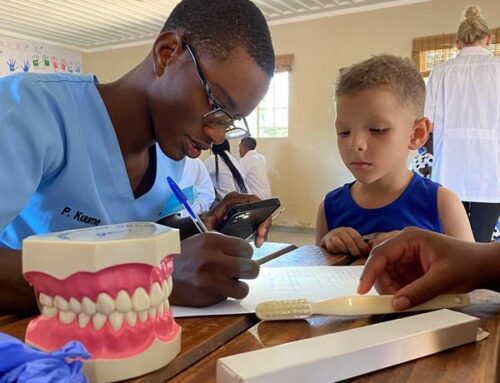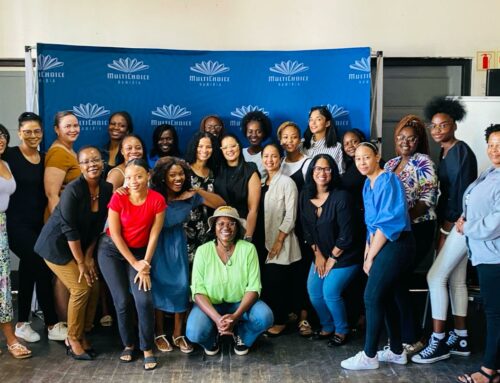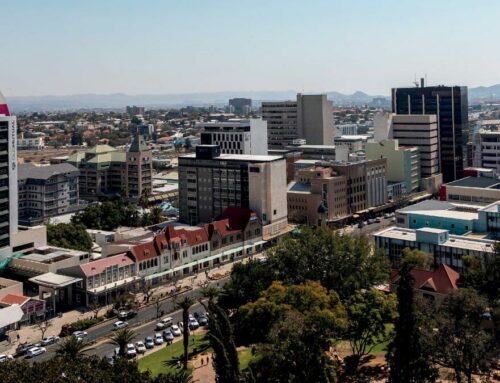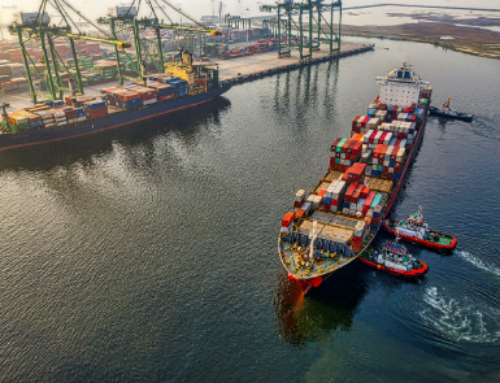AN ECOSYSTEM FOR CHANGE
An exciting pilot is being run on the outskirts of Windhoek. It aims to develop a new way to produce building material, create food security, agricultural jobs and dignified low-cost housing all at once.
MycoHAB is a fascinating initiative implemented by Standard Bank Namibia in cooperation with the Massachusetts Institute of Technology’s Centre for Bits and Atoms and US architecture firm redhouse studio. The relatively simple process has the potential to solve complex problems that the country is presently facing.
Situated at Brakwater, MycoHAB uses encroacher bush species like Acacia mellifera as a substrate to grow gourmet mushrooms. The waste is turned into bricks which at the same time traps the carbon dioxide accumulated in these plants through their lifetime.
The process starts with encroacher bush that is run through a wood chipper. The small wood bits form the substrate for oyster mushrooms to be grown on. Once they have the right moisture content, the wood chips are placed in cultivation bags and pasteurised to kill off any other organisms that might be present and to ensure a sterile environment for the mycelium to be introduced into. Mycelium is a mass of interwoven fungal threads called hyphen. It is the vegetative portion of a fungus which is often submerged in another body such as soil or another substrate.
After cooling overnight, a little bit of the mycelium spawn is added to each cultivation bag in the on-site lab and transferred to a growing room where the mycelium will multiply and fully colonise the cultivation bags containing the wood chip substrate. When it starts fruiting mushrooms through pre-cut slits, the bag is moved to a fruiting room where the humidity is higher and the temperature lower for the best mushroom growing conditions.
When fully grown the oyster mushrooms are harvested and sent to various supermarkets in Windhoek. The profits of the sales go to Buy-a-Brick, a Standard Bank Namibia project that aims to enable disadvantaged Namibians living in shacks to build a brick house that is safe and healthy to live in.
What is left over after harvesting the mushrooms is a cultivation bag filled with mycelium composite. This composite is placed in a metal brick template and pressed by a 150-tonne press to fully compact the material before it is burned in a kiln. The result is a brick that has the density of wood but the strength of concrete. These bricks are fire resistant, excellent insulators, keeping the house cool in summer and warm in winter and they are sound attenuating.
If implemented on a large scale, the MycoHAB project can have a massive impact on people’s lives as well as on the conservation of the environment. Removing encroacher species frees up land for grass which improves the carrying capacity for livestock and wildlife. The mushrooms grown on the wood chips are not only a source of income and subsistence, but also the food item which compared to other commercial crops uses the least amount of water, land and energy per kg of protein. The waste from this process is turned into a sustainable type of building material that is stronger than concrete and can lock away carbon for hundreds of years.

